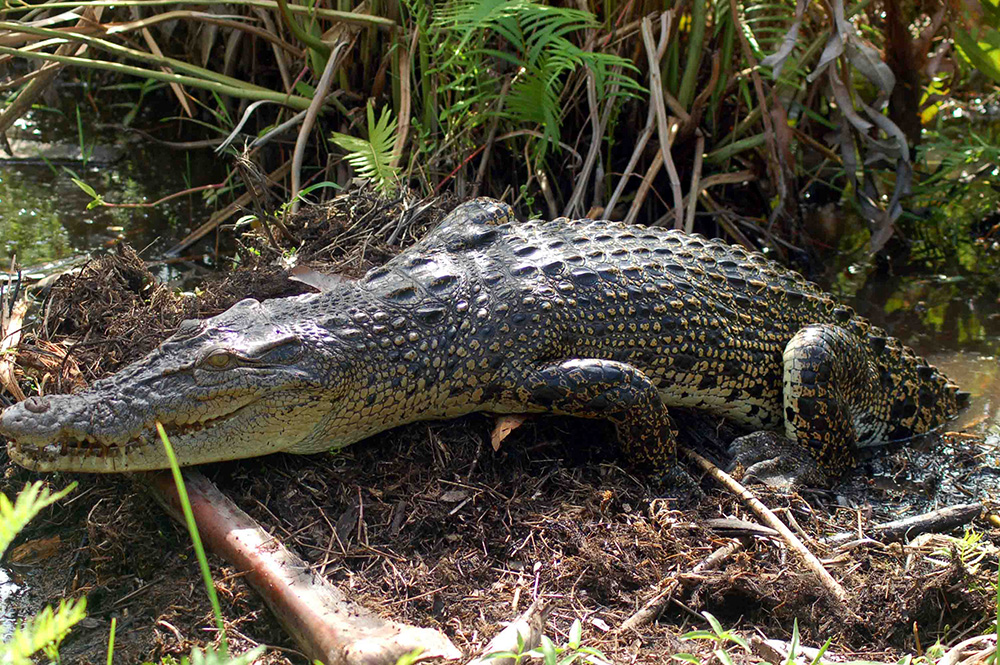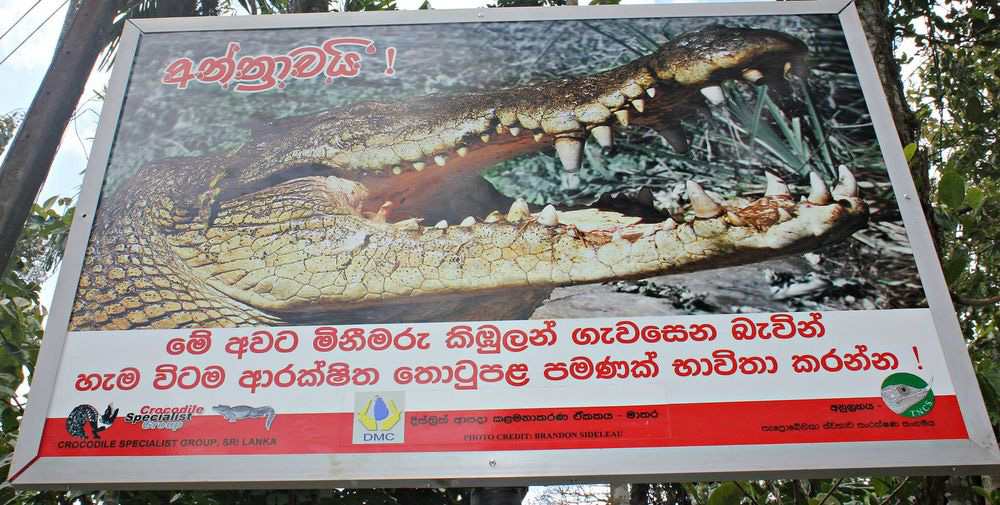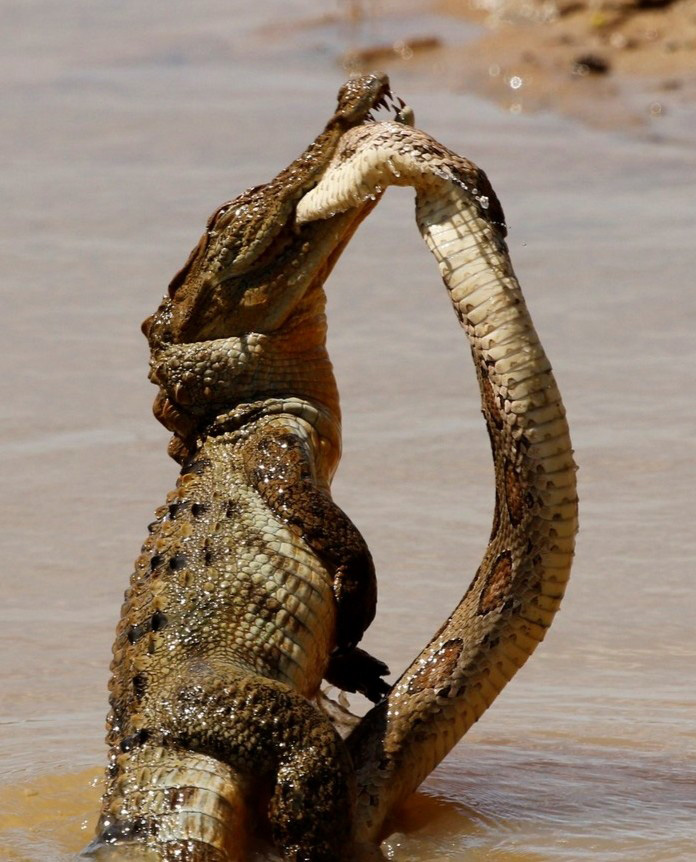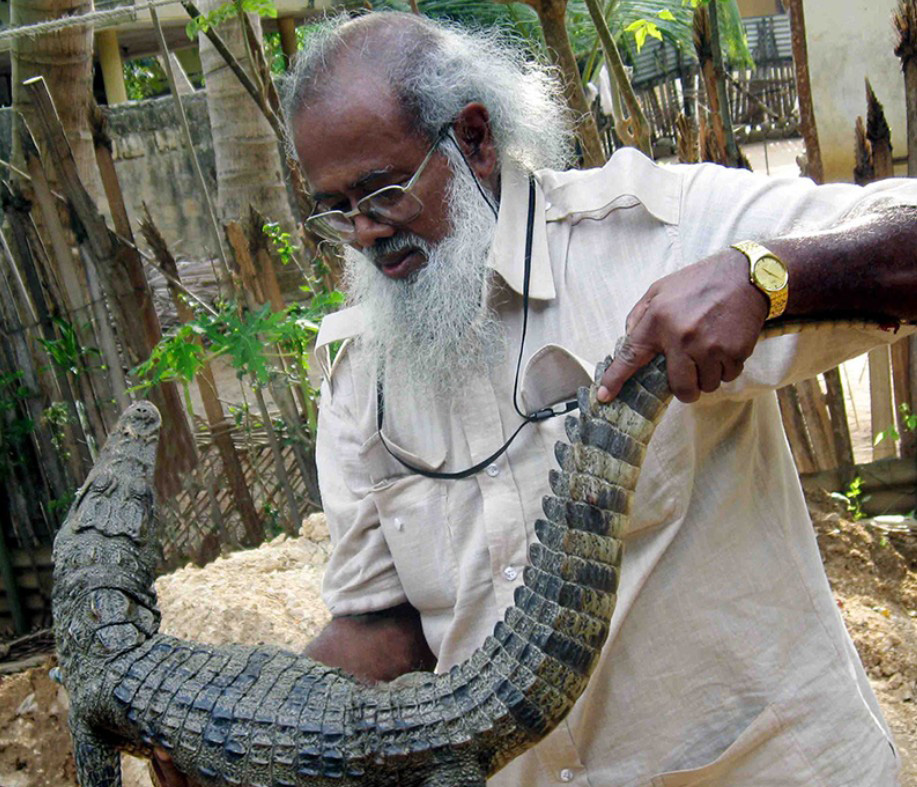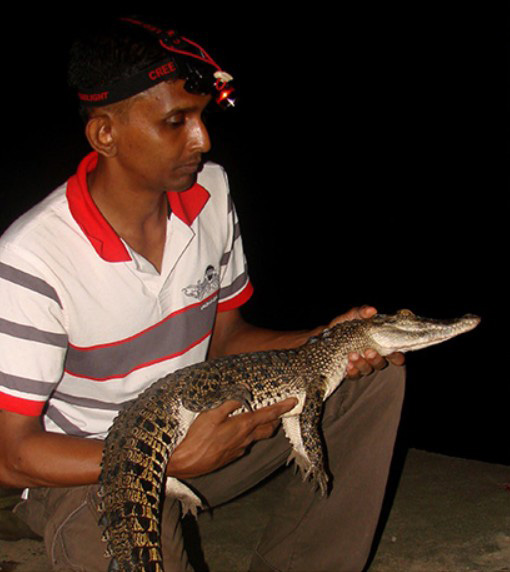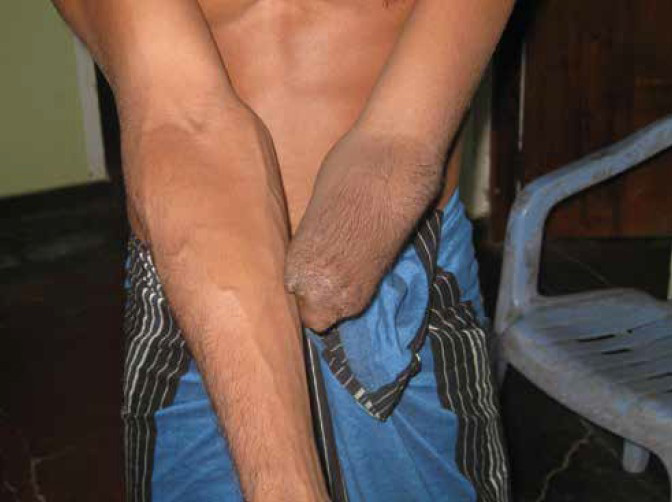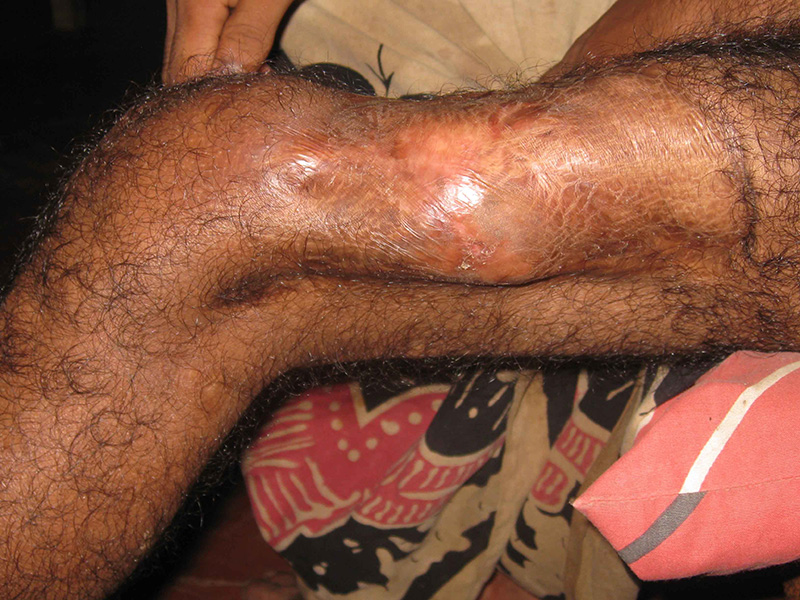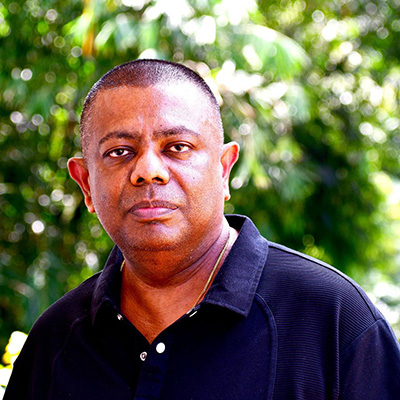Features
Forty-year saga that can never be forgotten
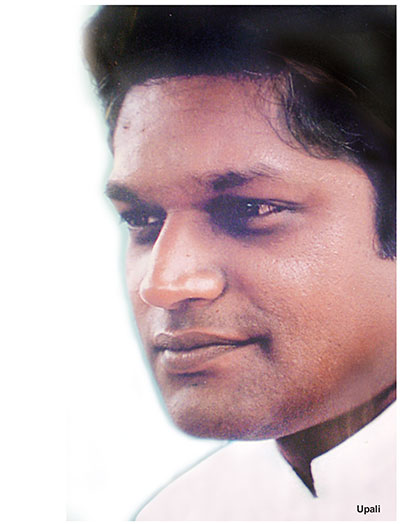
By Rohan Abeywardena
For the 35th anniversary of The Island five years ago, when our editor Prabath Sahabandu asked me to pen a piece for that issue, I took the opportunity to write about all the hilarious things we did to keep ourselves entertained, while we worked through all types of storms as during much of that period the country was in turmoil with LTTE terror attacks taking place regularly, mainly in the form of suicide bombings that snuffed out innocent lives by the dozens, the JVP’s bloody second uprising and the then government’s counter terror campaign to crush it. We ourselves came very close to peril on more than one occasion after our founder literally vanished into thin air; his newspapers were marked by some of those in power as threats to them. We managed to withstand all that not because we were some heroes, but it was simply a case of us just doing what we had to do in the line of duty.
Last week, when the editor asked me to contribute a column to the 40th anniversary issue, I literally underwent a shock reawakening as to how long it has been since I was among the first few journalists to join this newspaper just about two weeks before it started and a few weeks after the Sunday Island began. In fact, if my now 65-year-old memory serves me right, my first English editorial identity card here bore the legend EE12, indicating that I was the 12th employee to join it. By the time Mr. Upali Wijewardene disappeared with few others who were accompanying him while returning to Colombo on his Learjet from Malaysia in early 1983, our editorial had a formidable team with more than 60 permanent employees, including many veterans and many provincial correspondents, freelancers and even foreign contributors. Of that original lot, I believe only myself, Zanita Careem and Norman Palihawadana still remain here, while many have been claimed by father time and others migrated or are working elsewhere. Both Zanita and Norman have been working throughout at The Island, but I left the newspaper thrice and came back each time, but yet I have put in a total of more than 24 years with the newspaper.
 At the time when I first joined The Island in the first week of November 1981, I had been working at the now defunct, staid Sun newspaper of the then powerful Independent Newspaper Group as a sub-editor with Zanita and she followed me to The Island a month or two after me as did many others thereafter. When I joined that former newspaper, I had very high hopes of contributing to combatting wrongs in the society in general, because the newspaper literally shouted from its roof top how independent it was with regular ‘exposures’ with banner headlines. But I soon realised that it was nothing but a charade and started questioning my inner-self as to whose independence that they practised.
At the time when I first joined The Island in the first week of November 1981, I had been working at the now defunct, staid Sun newspaper of the then powerful Independent Newspaper Group as a sub-editor with Zanita and she followed me to The Island a month or two after me as did many others thereafter. When I joined that former newspaper, I had very high hopes of contributing to combatting wrongs in the society in general, because the newspaper literally shouted from its roof top how independent it was with regular ‘exposures’ with banner headlines. But I soon realised that it was nothing but a charade and started questioning my inner-self as to whose independence that they practised.
Some of those at the helm there could have even made Joseph Goebbels blush, for most of their exposures were nothing more than recycled formula type stories as in the celluloid world. Those regularly repeated topics were ‘child labour’, ‘pornography’, illicit abortions, boy prostitution, etc. While the so-called national newspapers kept the country’s intelligentsia generally hoodwinked, the Sinhala language organ of the Communist Party Aththa edited by legendary B.A. Siriwardena (fondly known as Sira) literally went to town, daily exposing corruption and intrigues that were widespread especially among those wielding power and Sira easily wrote the best biting editorial each day among all Sinhala language newspapers. That paper often only had one broad sheet comprising four pages. Even some of those haughty Colombo 07 types who would not want to be seen dead with a Sinhala Commie newspaper, was known to at least read Sira’s blunt down-to-earth editorials, like pinstriped British Bankers reading or ogling at the racy tabloid London SUN hidden inside the broadsheet Financial Times or the Guardian. Of course, unlike the London SUN there was nothing obscene in Sira’s Aththa. It also had formidable cartoonist Jiffrey Yoonoos, who was once slashed with a knife because someone could not stomach his drawings.
The Sun that I worked in and its weekly Weekend were not all about bumming the government in power. There were naturally exceptions like when they took on the then national carrier Air Lanka and its powerful Chairman and Managing Director, the late Capt. Rakhitha Wickramanayake. It was also a treat to read the weekly political column under the pen name Migara written by present Editor of The Sunday Times Sinha Ratnatunga, at a time when the country was starved of inside authentic news.
It was a very good training school for beginners. And I am eternally grateful that I received a good foundation there, especially under the tutelage of Louis Benedict. And many top journalists of today cut their teeth at the old Sun/Weekend.
The straw that broke the camel’s back for me was how The Sun covered the way the UNP storm troopers of the JSS wielding cycle chains and what not broke up the July ’80 general strike. I clearly remember staff photographers coming with photos of battered blood-soaked strikers, who were attacked near Lake House, but the newspaper was more worried about publishing those and antagonising JRJ than reporting the dastardly act. The strikers were simply asking for a Rs 300 salary increase from that regime which came to power with a five-sixths landslide victory in 1977 after making all sorts of promises, including eight pounds of cereals per person per week on top of the existing free rice ration. But after assuming power everything was forgotten and even the existing free rice ration was scrapped. Atop that the self-proclaimed Dharmishta (righteous) regime rolled out the red carpet to capitalist Robber Barons by devaluing the rupee by as much as 43 per cent, eliminated all food subsidies, reduced workers’ rights etc. etc.
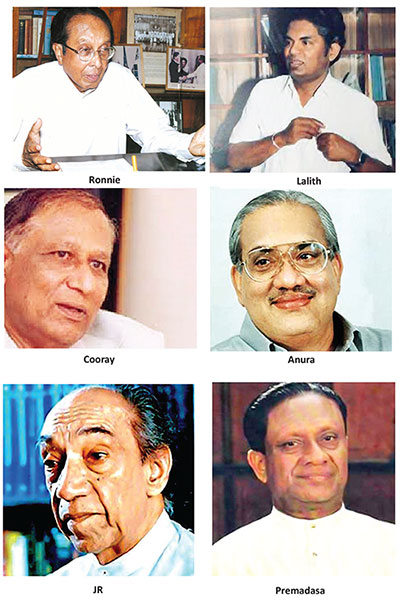 I must however state that why I left The Sun and joined a yet to start private newspaper was not because I then had any special illusions about its founder Mr. Upali Wijewardene, except maybe I was attracted to the challenge of working for a man, who was drawing venomous fire from some among the ruling clique, who, I knew, were no angels. However, once the newspaper was started, we all realised that he was a hands-off boss, who gave a free hand to his editor with no interference whatsoever, not even from some of his close relatives. And the editor too was game for a free media culture. In that way, Wijewardene literally opened the floodgates for a truly liberal media culture in this country among national media, which clearly later paved the way for the independent and competitive TV and radio which we enjoy today along with the newspapers and an abusive social media.
I must however state that why I left The Sun and joined a yet to start private newspaper was not because I then had any special illusions about its founder Mr. Upali Wijewardene, except maybe I was attracted to the challenge of working for a man, who was drawing venomous fire from some among the ruling clique, who, I knew, were no angels. However, once the newspaper was started, we all realised that he was a hands-off boss, who gave a free hand to his editor with no interference whatsoever, not even from some of his close relatives. And the editor too was game for a free media culture. In that way, Wijewardene literally opened the floodgates for a truly liberal media culture in this country among national media, which clearly later paved the way for the independent and competitive TV and radio which we enjoy today along with the newspapers and an abusive social media.
When I was called for the sole interview with newpaper’s Editor Vijitha Yapa and Englishman Peter Harland, both had been handpicked by Wijewardene to launch his English newspapers; what really hooked me was the salary that was offered. The interview was not about my competency, but how quickly I could come. One question thatYapa asked me was how much I was drawing at The Sun, when I said I was getting little over Rs 1,200 per month, which was a good salary for a journalist at the time he quickly said: “We’ll give you 1800 a month”. I said I would take it, though I’m sure had I asked for 2000 they would have agreed to it.
What hurt me the most when I left The Sun was the type of departure given to me. Since I felt I was considered just a mediocre, I thought they would be glad to see the back of me, but when I went to give my letter of resignation to editor Rex de Silva, he asked me to give it to the Chairman. But when I went up to the Chairman’s office, I was asked to take a seat and wait and I waited and waited for I believe was well over an hour. Finally, in disgust when I got up to dump my resignation letter with the reception and vanish from there for good, the receptionist said “You can now see the Chairman”. And when I walked into his room and gave the letter all he said was you can go. And that was the treatment meted out to an employee who had taken hardly a day’s leave in the nearly two years he had worked there. But that must be because I must have been the first to join a new rival.
So much happened in those early years of this newspaper that someone should write a book on its history. But I will leave the reader with some interesting personal experiences that must be told. After the sudden disappearance of Wijewardene, it dawned on everyone that we could no longer go on the way it was and we had to sue for peace especially with Finance Minister Ronnie de Mel and our main nemesis, Ranasinghe Premadasa, the then Prime Minister and Minister of Local Government, Housing and Construction and designated successor of JRJ. But Premadasa was paranoid about being usurped by not only Wijewardene, but even by others like Lalith Athulathmudali, Gamini Dissanayake, and he even clashed with Ronnie de Mel. While de Mel was willing to kiss and forget as long as he got good coverage in return from us,Premadasa was not the forgiving or forgetting type.
However, once we got into a fresh scrape with de Mel. It all started with him bashing us in parliament in the worst possible way, most probably after someone provoked him. At the time the late Ajith Samaranayake, probably one of the most talented journalists this country has hitherto produced, acted as editor as Gamini (Gamma to most of us) Weerakoon was abroad. So not to be outdone, Ajith wrote one of the most devastating editorials in reply headlined ‘Barbarians at the gate’ and carried it prominently on page one from top to bottom on left side, not on the usual editorial page. The immediate result was fireworks and I will not go into details except to say banks could have throttled us at the time at the behest of the powerful FM.
Around this time, I had started doing a series of interviews with important political personalities of the day called FIRING LINE. But in order to make peace with Mr. de Mel once again I was ordered to do a weekly interview with him.
Similarly, I learned the hard way why Junius Richard Jayewardene was called the 20th Century Fox. He was a person who never gave any official interviews to any local journalist as long as he was in power. So, when in retirement I thought I could cajole him into speaking out as there was so much blood letting since the signing of the controversial Indo-Lanka Accord of July 1987, for political expediency and there seemed to be no let up with his own party divided and in tatters. Well, I finally did manage to get an appointment for an interview through his Secretary Mr. Mapitigama. At the appointed day and time, I went to his private residence at Ward Place, ‘Braemar’. After a short chat with the head of his security detail SSP Sumith de Silva and Mr. Mapitigama I was ushered into old JRJ’s office and after the initial handshake and my taking a seat opposite him, he at once asked me something like so young man what do you want to talk about? I quickly pulled out my cassette tape recorder and the list of questions.
Now, I must say the secret of my success with the Firing Line series was that I literally ambushed my subjects usually with a below the belt question at the opening bell itself as that almost always resulted in my ‘victim’ virtually eating humble pie after being stunned. With the 20th Century Fox I did not however plan any such stunts but the intention was to soften him up first by pandering to his tastes before trying hard stuff. But lo and behold what I finally got from him was the shock of my career.
The minute I moved to switch on the tape he said stop and to put it away. Then he said, “We’ll first discuss what you want to ask me”. I skipped all formalities and started asking about most of the problems facing the country caused by the UNP often changing the goal post because it wanted to control everything through the imperial presidency of his. But each time I tried to raise an issue from the past he simply shut me up by asking whether I was there and he would say, “You can’t say that because you were not there”.
Most interestingly and ironically the old man was not worried about what was happening to the country, but was repeatedly griping about how much they had suffered by being deprived of their estates by the Land Reforms of the previous United Front government of Bandaranaike. In a way, it explained why he wanted to take revenge from her soon after coming to power.
One thing on which he did make his opinion known to me during that one-sided exchange was that it was wrong of Lalith and Gamini to break away from the party to fight Premadasa. His line of thinking was that they should have worked for change from within.
And finally he said something to the effect “now you got what you came for”, but when I protested that I came there after informing the editor that I am going to interview President Jayewardene and I couldn’t go back and tell him I had no interview. Then he thought for a few seconds and asked me to leave the questions with his secretary.
A few days later, Mapitigama called me and said the President’s answers were ready. I quickly drove to ‘Braemar’, collected it without even bothering to look at what was inside the closed envelope and rushed back to the office thinking I was on top of the world with an exclusive interview with the ex-President.
But when I went through it, I found that what he had answered were not the questions I had given; they were either reworded or totally new questions to fit JRJ’s agenda. When I suggested to then editor Gamini Weerakoon we throw it away and forget about it, the boss however laughed and asked me to carry it.
Another interesting experience I had was when I went to do a Firing Line interview with the late Anura Bandaranaike at his Rosmead Place residence when he was the Leader of the Opposition during President Premadasa’s tenure. Bandaranaike being a formidable debater with the gift of the gab I had no intention of giving him any kid glove treatment even though I then literally worked for his uncle Dr. Seevali Ratwatte, who was our Chairman at the time.
Now, I had been battling Premadasa for a long time in my own way, so at the opening bell I asked Bandaranaike how he hoped to defeat Premadasa when the latter got up as early as 3:00 am and began attending to his work at 4:00 am, whereas the Leader of the Opposition usually got up long past noon after enjoying the good life into the early hours of the morning. The question blew a fuse inside him and the burly giant got up, shoving the coffee table that was there between us, at me. Luckily, I was able to jump back. But soon he realised his blunder and recovered his composure and said he didn’t have to work so hard or something to that effect. But I am sure I had the better of him in the ensuing interview.
Over the particular interview I had no problem back at UNL. In fact, the late Dr. Ratwatte was a gem of a boss when dealing with journalists like me. There was a real incident later on when I wrote a story about some local consultants hired by the World Bank to prepare feasibility studies to help start various business ventures, and took it for a ride. Having spent a couple of million dollars or more on the project, the WB found most of those feasibility studies were either frivolous or redundant. For they were about how to start a successful bakery business, a laundry, beauty salon, etc.
When the newspaper hit the market with that story one of the consultants concerned immediately phoned and demanded a correction, but point blank I refused. The result was that this highly qualified guy, being a Bandaranaike, came to teach me a lesson after telling me so by rushing to our Chairman. The minute he arrived in Dr Ratwatte’s office I got a call from the head office saying the Chairman wanted to see me. In fact, I saw this guy driving into the UNL compound in an Alfa Romeo. I immediately armed myself with something that I was able to surprise him with. So, when Dr Ratwatte asked me ‘Rohan what is all this’? I showed everyone a copy of the internal World Bank critical assessment. But before I could even open it the Chairman just said, ‘Okay, okay you can go back’.
Then there was also a Firing Line Interview that didn’t go beyond a few questions with Bulathsinhalage Sirisena Cooray, one-time strongman under Premadasa. So, some time after the latter’s assassination and after he was distanced by both the UNP and the Premadasa family I asked Cooray for an interview to tell his side of the story as he was being maligned by many. When he agreed for an interview, I got myself dropped at his then residence at Lake Drive close to McDonald’s, Rajagiriya, and asked the driver to pick me up later on his way back after dropping several others.
One of my planned line of attacks was to nail him about his dealings with the underworld characters, like Soththi Upali. So, when I came to the subject of how he came to know Soththi Upali, and no sooner had Cooray told me ‘oya lamaya’ [Soththi Upali] used to drop into see him in connection with Gam Udawa work, than he realised the trap was being laid to corner him; he immediately told me to leave. By that time, I believe Soththi Upali had already been killed by his enemies. But since there was no sign of my vehicle and though the distance from his residence to MacDonald’s Junction wouldn’t have been more than 150 metres, but it felt as if it was the longest walk I had ever undertaken and unlike today Lake Drive was then generally deserted.
My luck with ‘Firing Line’ however, was soon running out with my potential subjects/victims soon getting wise to my shock therapy and some of them even pitched into me on flimsy excuses even before I could open my mouth at an interview.
I believe one of the first to try that counter shock strategy on me was the late TULF Leader M. Sivasithamparam, who succeeded as the TULF Leader after the Tiger hit team assassinated A. Amirthalingam. So, when I went to interview him for ‘Firing Line’, I knew he was no spring chicken as he was a veteran politician and a formidable lawyer. When I got to his place, close to Thimbirigasyaya Junction, I got a shelling from the man accusing me of keeping him waiting for about two hours. That lecture of his about being punctual and not wasting other people’s time would have taken a good 15 minutes. But I was quite sure the appointment I made was for around 10:30, but he insisted it was two hours earlier, or something to that effect.
Features
When floods strike: How nations keep food on the table

Insights from global adaptation strategies
Sri Lanka has been heavily affected by floods, and extreme flooding is rapidly becoming one of the most disruptive climate hazards worldwide. The consequences extend far beyond damaged infrastructure and displaced communities. The food systems and supply networks are among the hardest hit. Floods disrupt food systems through multiple pathways. Croplands are submerged, livestock are lost, and soils become degraded due to erosion or sediment deposition. Infrastructural facilities like roads, bridges, retail shops, storage warehouses, and sales centres are damaged or rendered inaccessible. Without functioning food supply networks, even unaffected food-producing regions struggle to continue daily lives in such disasters. Poor households, particularly those dependent on farming or informal rural economies, face sharp food price increases and income loss, increasing vulnerability and food insecurity.
Many countries now recognie that traditional emergency responses alone are no longer enough. Instead, they are adopting a combination of short-term stabilisation measures and long-term strategies to strengthen food supply chains against recurrent floods. The most common immediate response is the provision of emergency food and cash assistance. Governments, the World Food Programme, and other humanitarian organisations often deliver food, ready-to-eat rations, livestock feed, and livelihood support to affected communities.
Alongside these immediate measures, some nations are implementing long-term strategic actions. These include technology- and data-driven approaches to improve flood preparedness. Early warning systems, using satellite data, hydrological models, and advanced weather forecasting, allow farmers and supply chain operators to prepare for potential disruptions. Digital platforms provide market intelligence, logistics updates, and risk notifications to producers, wholesalers, and transporters. This article highlights examples of such strategies from countries that experience frequent flooding.
China: Grain Reserves and Strategic Preparedness
China maintains a large strategic grain reserve system for rice, wheat, and maize; managed by NFSRA-National Food and Strategic Reserves Administration and Sinograin (China Grain Reserves Corporation (Sinograin Group), funded by the Chinese government, that underpins national food security and enables macro-control of markets during supply shocks. Moreover, improvements in supply chain digitization and hydrological monitoring, the country has strengthened its ability to maintain stable food availability during extreme weather events.
Bangladesh: Turning Vulnerability into Resilience
In recent years, Bangladesh has stood out as one of the world’s most flood-exposed countries, yet it has successfully turned vulnerability into adaptive resilience. Floating agriculture, flood-tolerant rice varieties, and community-run grain reserves now help stabilise food supplies when farmland is submerged. Investments in early-warning systems and river-basin management have further reduced crop losses and protected rural livelihoods.
Netherlands, Japan: High-Tech Models of Flood Resilience
The Netherlands offers a highly technical model. After catastrophic flooding in 1953, the country completely redesigned its water governance approach. Farmland is protected behind sea barriers, rivers are carefully controlled, and land-use zoning is adaptive. Vertical farming and climate-controlled greenhouses ensure year-round food production, even during extreme events. Japan provides another example of diversified flood resilience. Following repeated typhoon-induced floods, the country shifted toward protected agriculture, insurance-backed farming, and automated logistics systems. Cold storage networks and digital supply tracking ensure that food continues to reach consumers, even when roads are cut off. While these strategies require significant capital and investment, their gradual implementation provides substantial long-term benefits.
Pakistan, Thailand, Indonesia, and Vietnam: Reform in Response to Recurrent Floods
In contrast, Pakistan and Thailand illustrate both the consequences of climate vulnerability and the benefits of proactive reform. The 2022 floods in Pakistan submerged about one-third of the country, destroying crops and disrupting trade networks. In response, the country has placed greater emphasis on climate-resilient farming, water governance reforms, and satellite-based crop monitoring. Pakistan as well as India is promoting crop diversification and adjusting planting schedules to help farmers avoid the peak monsoon flood periods.
Thailand has invested in flood zoning and improved farm infrastructure that keep markets supplied even during severe flooding. Meanwhile, Indonesia and Vietnam are actively advancing flood-adapted land-use planning and climate-resilient agriculture. For instance, In Vietnam’s Mekong Delta, pilot projects integrate flood-risk mapping, adaptive cropping strategies, and ecosystem-based approaches to reduce vulnerability in agricultural and distribution areas. In Indonesia, government-supported initiatives and regional projects are strengthening flood-risk-informed spatial planning, adaptive farming practices, and community-based water management to improve resilience in flood-prone regions. (See Figure 1)
 The Global Lesson: Resilience Requires Early Investment
The Global Lesson: Resilience Requires Early Investment
The global evidence is clear: countries that invest early in climate-adaptive agriculture and resilient logistics are better able to feed their populations, even during extreme floods. Building a resilient future depends not only on how we grow food but also on how we protect, store, and transport it. Strengthening infrastructure is therefore central to stabilising food supply chains while maintaining food quality, even during prolonged disruptions. Resilient storage systems, regional grain reserves, efficient cold chains, improved farming infrastructure, and digital supply mapping help reduce panic buying, food waste, and price shocks after floods, while ensuring that production capacity remains secure.
Persistent Challenges
However, despite these advances, many flood-exposed countries still face significant challenges. Resources are often insufficient to upgrade infrastructure or support vulnerable rural populations. Institutional coordination across the agriculture, disaster management, transport, and environmental sectors remains weak. Moreover, the frequency and scale of climate-driven floods are exceeding the design limits of older disaster-planning frameworks. As a result, the gap between exposure and resilience continues to widen. These challenges are highly relevant to Sri Lanka as well and require deliberate, gradual efforts to phase them out.
The Role of International Trade and global markets
When domestic production falls in such situations, international trade serves as an important buffer. When domestic production is temporarily reduced, imports and regional trade flows can help stabilise food availability. Such examples are available from other countries. For instance, In October 2024, floods in Bangladesh reportedly destroyed about 1.1 million tonnes of rice. In response, the government moved to import large volumes of rice and allowed accelerated or private-sector imports of rice to stabilize supply and curb food price inflation. This demonstrates how, when domestic production fails, international trade/livestock/food imports (from trade partners) acted as a crucial buffer to ensure availability of staple food for the population. However, this approach relies on well-functioning global markets, strong diplomatic relationships, and adequate foreign exchange, making it less reliable for economically fragile nations. For example, importing frozen vegetables to Sri Lanka from other countries can help address supply shortages, but considerations such as affordability, proper storage and selling mechanisms, cooking guidance, and nutritional benefits are essential, especially when these foods are not widely familiar to local populations.
Marketing and Distribution Strategies during Floods
Ensuring that food reaches consumers during floods requires innovative marketing and distribution strategies that address both supply- and demand-side challenges. Short-term interventions often include direct cash or food transfers, mobile markets, and temporary distribution centres in areas where conventional marketplaces become inaccessible. Price stabilisation measures, such as temporary caps or subsidies on staple foods, help prevent sharp inflation and protect vulnerable households. Awareness campaigns also play a role by educating consumers on safe storage, cooking methods, and the nutritional value of unfamiliar imported items, helping sustain effective demand.
Some countries have integrated technology to support these efforts; in this regard, adaptive supply chain strategies are increasingly used. Digital platforms provide farmers, wholesalers, and retailers with real-time market information, logistics updates, and flood-risk alerts, enabling them to reroute deliveries or adjust production schedules. Diversified delivery routes, using alternative roads, river transport, drones, or mobile cold-storage units, have proven essential for maintaining the flow of perishable goods such as vegetables, dairy, and frozen products. A notable example is Japan, where automated logistics systems and advanced cold-storage networks help keep supermarkets stocked even during severe typhoon-induced flooding.
The Importance of Research, Coordination, and Long-Term Commitment
Global experience also shows that research and development, strong institutional coordination, and sustained national commitment are fundamental pillars of flood-resilient food systems. Countries that have successfully reduced the impacts of recurrent floods consistently invest in agricultural innovation, cross-sector collaboration, and long-term planning.
Awareness Leads to Preparedness
As the summary, global evidence shows that countries that act early, plan strategically, and invest in resilience can protect both people and food systems. As Sri Lanka considers long-term strategies for food security under climate change, learning from flood-affected nations can help guide policy, planning, and public understanding. Awareness is the first step which preparedness must follow. These international experiences offer valuable lessons on how to protect food systems through proactive planning and integrated actions.
(Premaratne (BSc, MPhil, LLB) isSenior Lecturer in Agricultural Economics Department of Agricultural Systems, Faculty of Agriculture, Rajarata University. Views are personal.)
Key References·
Cabinet Secretariat, Government of Japan, 2021. Fundamental Plan for National Resilience – Food, Agriculture, Forestry and Fisheries / Logistics & Food Supply Chains. Tokyo: Cabinet Secretariat.
· Delta Programme Commissioner, 2022. Delta Programme 2023 (English – Print Version). The Hague: Netherlands Delta Programme.
· Hasanuddin University, 2025. ‘Sustainable resilience in flood-prone rice farming: adaptive strategies and risk-sharing around Tempe Lake, Indonesia’, Sustainability. Available at: https://www.mdpi.com/2071-1050/17/6/2456 [Accessed 3 December 2025].
· Mekong Urban Flood Resilience and Drainage Programme (TUEWAS), 2019–2021. Integrated urban flood and drainage planning for Mekong cities. TUEWAS / MRC initiative.
· Ministry of Agriculture and Rural Affairs, People’s Republic of China, 2025. ‘China’s summer grain procurement surpasses 50 mln tonnes’, English Ministry website, 4 July.
· National Food and Strategic Reserves Administration (China) 2024, ‘China purchases over 400 mln tonnes of grain in 2023’, GOV.cn, 9 January. Available at: https://english.www.gov.cn/archive/statistics/202401/09/content_WS659d1020c6d0868f4e8e2e46.html
· Pakistan: 2022 Floods Response Plan, 2022. United Nations / Government of Pakistan, UN Digital Library.
· Shigemitsu, M. & Gray, E., 2021. ‘Building the resilience of Japan’s agricultural sector to typhoons and heavy rain’, OECD Food, Agriculture and Fisheries Papers, No. 159. Paris: OECD Publishing.
· UNDP & GCF, 2023. Enhancing Climate Resilience in Thailand through Effective Water Management and Sustainable Agriculture (E WMSA): Project Factsheet. UNDP, Bangkok.
· United Nations Development Programme (UNDP), 2025. ‘Rice Bank revives hope in flood hit hill tracts, Bangladesh’, UNDP, 19 June.
· World Bank, 2022. ‘Bangladesh: World Bank supports food security and higher incomes of farmers vulnerable to climate change’, World Bank press release, 15 March.
Features
Can we forecast weather precisely?

Weather forecasts are useful. People attentively listen to them but complain that they go wrong or are not taken seriously. Forecasts today are more probabilistically reliable than decades ago. The advancement of atmospheric science, satellite imaging, radar maps and instantly updated databases has improved the art of predicting weather.
Yet can we predict weather patterns precisely? A branch of mathematics known as chaos theory says that weather can never be foretold with certainty.
The classical mechanics of Issac Newton governing the motion of all forms of matter, solid, liquid or gaseous, is a deterministic theory. If the initial conditions are known, the behaviour of the system at later instants of time can be precisely predicted. Based on this theory, occurrences of solar eclipses a century later have been predicted to an accuracy of minutes and seconds.
The thinking that the mechanical behaviour of systems in nature could always be accurately predicted based on their state at a previous instant of time was shaken by the work of the genius French Mathematician Henri Poincare (1864- 1902).
Eclipses are predicted with pinpoint accuracy based on analysis of a two-body system (Earth- Moon) governed by Newton’s laws. Poincare found that the equivalent problem of three astronomical bodies cannot be solved exactly – sometimes even the slightest variation of an initial condition yields a drastically different solution.
A profound conclusion was that the behaviour of physical systems governed by deterministic laws does not always allow practically meaningful predictions because even a minute unaccountable change of parameters leads to completely different results.
Until recent times, physicists overlooked Poincare’s work and continued to believe that the determinism of the laws of classical physics would allow them to analyse complex problems and derive future happenings, provided necessary computations are facilitated. When computers became available, the meteorologists conducted simulations aiming for accurate weather forecasting. The American mathematician Edward Lorenz, who turned into a reputed meteorologist, carried out such studies in the early 1960s, arrived at an unexpected result. His equations describing atmospheric dynamics demonstrated a strange behaviour. He found that even a minute change (even one part in a million) in initial parameters leads to a completely different weather pattern in the atmosphere. Lorenz announced his finding saying, A flap of a butterfly wing in one corner of the world could cause a cyclone in a far distant location weeks later! Lorenz’s work opened the way for the development branch of mathematics referred to as chaos theory – an expansion of the idea first disclosed by Henri Poincare.
We understand the dynamics of a cyclone as a giant whirlpool in the atmosphere, how it evolves and the conditions favourable for their origination. They are created as unpredictable thermodynamically favourable relaxation of instabilities in the atmosphere. The fundamental limitations dictated by chaos theory forbid accurate forecasting of the time and point of its appearance and the intensity. Once a cyclone forms, it can be tracked and the path of movement can be grossly ascertained by frequent observations. However, absolutely certain predictions are impossible.
A peculiarity of weather is that the chaotic nature of atmospheric dynamics does not permit ‘long – term’ forecasting with a high degree of certainty. The ‘long-term’ in this context, depending on situation, could be hours, days or weeks. Nonetheless, weather forecasts are invaluable for preparedness and avoiding unlikely, unfortunate events that might befall. A massive reaction to every unlikely event envisaged is also not warranted. Such an attitude leads to social chaos. The society far more complex than weather is heavily susceptible to chaotic phenomena.
by Prof. Kirthi Tennakone (ktenna@yahoo.co.uk)
Features
When the Waters Rise: Floods, Fear and the ancient survivors of Sri Lanka
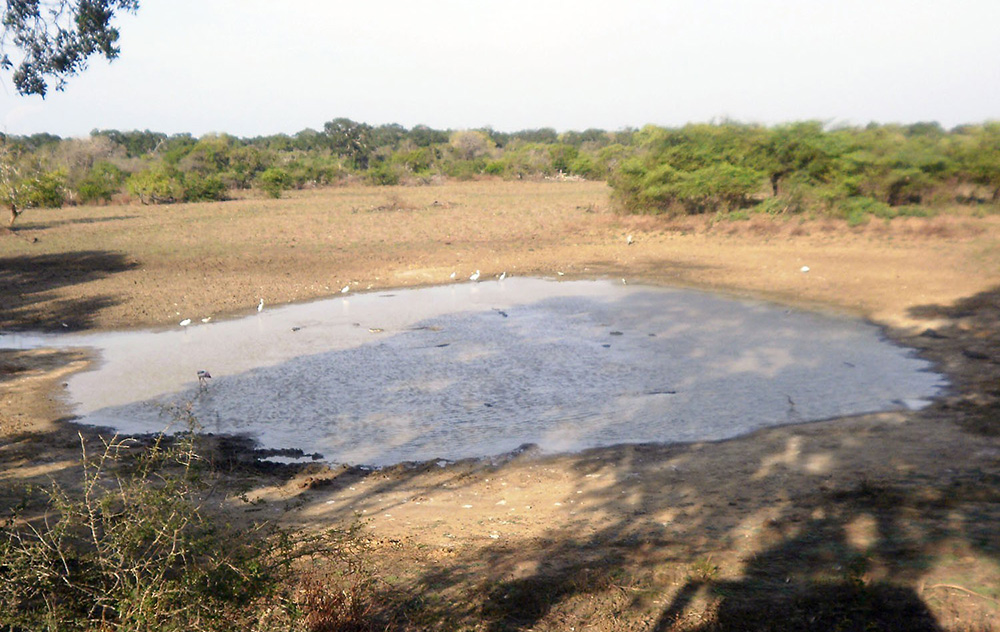
The water came quietly at first, a steady rise along the riverbanks, familiar to communities who have lived beside Sri Lanka’s great waterways for generations. But within hours, these same rivers had swollen into raging, unpredictable forces. The Kelani Ganga overflowed. The Nilwala broke its margins. The Bentara, Kalu, and Mahaweli formed churning, chocolate-brown channels cutting through thousands of homes.
When the floods finally began to recede, villagers emerged to assess the damage, only to be confronted by another challenge: crocodiles. From Panadura’s back lanes to the suburbs of Colombo, and from the lagoons around Kalutara to the paddy fields of the dry zone, reports poured in of crocodiles resting on bunds, climbing over fences, or drifting silently into garden wells.
For many, these encounters were terrifying. But to Sri Lanka’s top herpetologists, the message was clear: this is what happens when climate extremes collide with shrinking habitats.
“Crocodiles are not invading us … we are invading floodplains”
Sri Lanka’s foremost crocodile expert, Dr. Anslem de Silva, Regional Chairman for South Asia and Iran of the IUCN/SSC Crocodile Specialist Group, has been studying crocodiles for over half a century. His warning is blunt.
“When rivers turn into violent torrents, crocodiles simply seek safety,” he says. “They avoid fast-moving water the same way humans do. During floods, they climb onto land or move into calm backwaters. People must understand this behaviour is natural, not aggressive.”
In the past week alone, Saltwater crocodiles have been sighted entering the Wellawatte Canal, drifting into the Panadura estuary, and appearing unexpectedly along Bolgoda Lake.
“Saltwater crocodiles often get washed out to sea during big floods,” Dr. de Silva explains. “Once the current weakens, they re-enter through the nearest lagoon or canal system. With rapid urbanisation along these waterways, these interactions are now far more visible.”
- An adult Salt Water Crocodile (Crocodylus porosus) (Photo -Madura de Silva)
- Adult Mugger (Crocodylus plaustris) Photo -Laxhman Nadaraja
- A Warning sign board
- A Mugger holding a a large Russell ’s viper (Photo- R. M. Gunasinghe)
- Anslem de Silva
- Suranjan Karunarathna
This clash between wildlife instinct and human expansion forms the backdrop of a crisis now unfolding across the island.
A conflict centuries old—now reshaped by climate change
Sri Lanka’s relationship with crocodiles is older than most of its kingdoms. The Cūḷavaṃsa describes armies halted by “flesh-eating crocodiles.” Ancient medical texts explain crocodile bite treatments. Fishermen and farmers around the Nilwala, Walawe, Maduganga, Batticaloa Lagoon, and Kalu Ganga have long accepted kimbula as part of their environment.
But the modern conflict has intensified dramatically.
A comprehensive countrywide survey by Dr. de Silva recorded 150 human–crocodile attacks, with 50 fatal, between 2008 and 2010. Over 52 percent occurred when people were bathing, and 83 percent of victims were men engaged in routine activities—washing, fishing, or walking along shallow margins.
Researchers consistently emphasise: most attacks happen not because crocodiles are unpredictable, but because humans underestimate them.
Yet this year’s flooding has magnified risks in new ways.
“Floods change everything” — Dr. Nimal D. Rathnayake
Herpetologist Dr. Nimal Rathnayake says the recent deluge cannot be understood in isolation.
“Floodwaters temporarily expand the crocodile’s world,” he says. “Areas people consider safe—paddy boundaries, footpaths, canal edges, abandoned land—suddenly become waterways.”
Once the water retreats, displaced crocodiles may end up in surprising places.
“We’ve documented crocodiles stranded in garden wells, drainage channels, unused culverts and even construction pits. These are not animals trying to attack. They are animals trying to survive.”
According to him, the real crisis is not the crocodile—it is the loss of wetlands, the destruction of natural river buffers, and the pollution of river systems.
“When you fill a marsh, block a canal, or replace vegetation with concrete, you force wildlife into narrower corridors. During floods, these become conflict hotspots.”
Past research by the Crocodile Specialist Group shows that more than 300 crocodiles have been killed in retaliation or for meat over the past decade. Such killings spike after major floods, when fear and misunderstanding are highest.
“Not monsters—ecosystem engineers” — Suranjan Karunaratne
On social media, flood-displaced crocodiles often go viral as “rogue beasts.” But conservationist Suranjan Karunaratne, also of the IUCN/SSC Crocodile Specialist Group, says such narratives are misleading.
“Crocodiles are apex predators shaped by millions of years of evolution,” he says. “They are shy, intelligent animals. The problem is predictable human behaviour.”
In countless attack investigations, Karunaratne and colleagues found a repeated pattern: the Three Sames—the same place, the same time, the same activity.
“People use the same bathing spot every single day. Crocodiles watch, learn, and plan. They hunt with extraordinary patience. When an attack occurs, it’s rarely random. It is the culmination of observation.”
He stresses that crocodiles are indispensable to healthy wetlands. They: control destructive catfish populations, recycle nutrients, clean carcasses and diseased fish, maintain biodiversity, create drought refuges through burrows used by amphibians and reptiles.
“Removing crocodiles destroys an entire chain of ecological services. They are not expendable.”
Karunaratne notes that after the civil conflict, Mugger populations in the north rebounded—proof that crocodiles recover when given space, solitude, and habitat.
Floods expose a neglected truth: CEEs save lives—if maintained In high-risk communities, Crocodile Exclusion Enclosures (CEEs) are often the only physical barrier between people and crocodiles. Built along riverbanks or tanks, these enclosures allow families to bathe, wash, and collect water safely.
Yet Dr. de Silva recounts a tragic incident along the Nilwala River where a girl was killed inside a poorly maintained enclosure. A rusted iron panel had created a hole just large enough for a crocodile to enter.
“CEEs are a life-saving intervention,” he says. “But they must be maintained. A neglected enclosure is worse than none at all.”
Despite their proven effectiveness, many CEEs remain abandoned, broken or unused.
Climate change is reshaping crocodile behaviour—and ours
Sri Lanka’s floods are no longer “cycles” as described in folklore. They are increasingly intense, unpredictable and climate-driven. The warming atmosphere delivers heavier rainfall in short bursts. Deforested hillsides and filled wetlands cannot absorb it.
Rivers swell rapidly and empty violently.
Crocodiles respond as they have always done: by moving to calmer water, by climbing onto land, by using drainage channels, by shifting between lagoons and canals, by following the shape of the water.
But human expansion has filled, blocked, or polluted these escape routes.
What once were crocodile flood refuges—marshes, mangroves, oxbow wetlands and abandoned river channels—are now housing schemes, fisheries, roads, and dumpsites.
Garbage, sand mining and invasive species worsen the crisis
The research contained in the uploaded reports paints a grim but accurate picture. Crocodiles are increasingly seen around garbage dumps, where invasive plants and waste accumulate. Polluted water attracts fish, which in turn draw crocodiles.
Excessive sand mining in river mouths and salinity intrusion expose crocodile nesting habitats. In some areas, agricultural chemicals contaminate wetlands beyond their natural capacity to recover.
In Borupana Ela, a short study found 29 Saltwater crocodiles killed in fishing gear within just 37 days.
Such numbers suggest a structural crisis—not a series of accidents.
Unplanned translocations: a dangerous human mistake
For years, local authorities attempted to reduce conflict by capturing crocodiles and releasing them elsewhere. Experts say this was misguided.
“Most Saltwater crocodiles have homing instincts,” explains Karunaratne. “Australian studies show many return to their original site—even if released dozens of kilometres away.”
Over the past decade, at least 26 Saltwater crocodiles have been released into inland freshwater bodies—home to the Mugger crocodile. This disrupts natural distribution, increases competition, and creates new conflict zones.
Living with crocodiles: a national strategy long overdue
All three experts—Dr. de Silva, Dr. Rathnayake and Karunaratne—agree that Sri Lanka urgently needs a coordinated, national-level mitigation plan.
* Protect natural buffers
Replant mangroves, restore riverine forests, enforce river margin laws.
* Maintain CEEs
They must be inspected, repaired and used regularly.
* Public education
Villagers should learn crocodile behaviour just as they learn about monsoons and tides.
* End harmful translocations
Let crocodiles remain in their natural ranges.
* Improve waste management
Dumps attract crocodiles and invasive species.
* Incentivise community monitoring
Trained local volunteers can track sightings and alert authorities early.
* Integrate crocodile safety into disaster management
Flood briefings should include alerts on reptile movement.
“The floods will come again. Our response must change.”
As the island cleans up and rebuilds, the deeper lesson lies beneath the brown floodwaters. Crocodiles are not new to Sri Lanka—but the conditions we are creating are.
Rivers once buffered by mangroves now rush through concrete channels. Tanks once supporting Mugger populations are choked with invasive plants. Wetlands once absorbing floodwaters are now levelled for construction.
Crocodiles move because the water moves. And the water moves differently today.
Dr. Rathnayake puts it simply:”We cannot treat every flooded crocodile as a threat to be eliminated. These animals are displaced, stressed, and trying to survive.”
Dr. de Silva adds:”Saving humans and saving crocodiles are not competing goals. Both depend on understanding behaviour—ours and theirs.”
And in a closing reflection, Suranjan Karunaratne says:”Crocodiles have survived 250 million years, outliving dinosaurs. Whether they survive the next 50 years in Sri Lanka depends entirely on us.”
For now, as the waters recede and the scars of the floods remain, Sri Lanka faces a choice: coexist with the ancient guardians of its waterways, or push them into extinction through fear, misunderstanding and neglect.
By Ifham Nizam
-

 News6 days ago
News6 days agoWeather disasters: Sri Lanka flooded by policy blunders, weak enforcement and environmental crime – Climate Expert
-
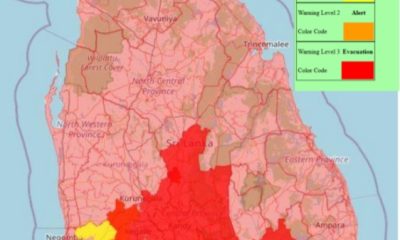
 Latest News6 days ago
Latest News6 days agoLevel I landslide RED warnings issued to the districts of Badulla, Colombo, Gampaha, Kalutara, Kandy, Kegalle, Kurnegala, Natale, Monaragala, Nuwara Eliya and Ratnapura
-
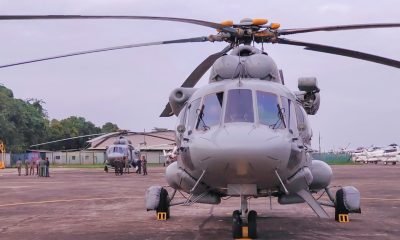
 Latest News6 days ago
Latest News6 days agoINS VIKRANT deploys helicopters for disaster relief operations
-
News3 days ago
Lunuwila tragedy not caused by those videoing Bell 212: SLAF
-

 Latest News7 days ago
Latest News7 days agoDepartment of Irrigation issues Critical flood warning to the Kelani river basin
-

 Latest News4 days ago
Latest News4 days agoLevel III landslide early warnings issued to the districts of Badulla, Kandy, Kegalle, Kurunegala, Matale and Nuwara-Eliya
-

 News2 days ago
News2 days agoLevel III landslide early warning continue to be in force in the districts of Kandy, Kegalle, Kurunegala and Matale
-

 Editorial7 days ago
Editorial7 days agoNeeded: Action not rhetoric


